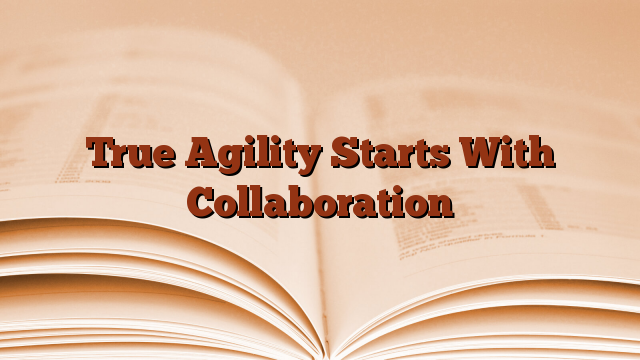Organizational design and business agility have always interested me long before they became buzzwords. I like assessing the people and goals of organizations and analyzing the psychology behind them. In 2007 I completed my first formal agile training and certification (Scrum Master). This program was stimulating and inspiring, not only because of the learning aspect, but because of the way agility can transform our working lives. Immediately after the course, I found ways to use the approaches discussed, including implementing Scrum for eLearning course development. While the organizations I’ve supported weren’t always ready for true agility, I stuck to the overarching theme and message behind agility.
Many people have written expressing frustration at what Agile is not. For those who see the power in Agile, you’ll also see that Agile isn’t a tool, it doesn’t turn requirements into user stories, it doesn’t package Agile as a daily standup (where everyone sits due to the length), and it’s not a development-oriented company . Agile focuses on value creation. And at the heart of Agile is value creation. Many people in organizations think that their independent work adds value. In many cases, these individuals create value, but all too often they work in isolated, disconnected workflows, creating their personal version of value. It goes back to what the customer is willing to pay for, which takes your business to the next level and develops an organizational dynamic that is in step with the customer. Many organizations even go so far as to say they are agile or collaborative. Do we really understand what it means to work together? I think that’s the core of everything.
If we understand and practice collaboration, we will respond to client needs/changes and be closely aligned enough to stay one step ahead of what our work is intended to deliver. The Agile Manifesto also talks about interactions rather than processes and tools, working software rather than documentation, and responding to change rather than following a plan. I believe that all of this can be achieved through true collaboration and alignment. In my opinion, in order to be able to fully cooperate, the following requirements must be met:
-
Individuals must leave prejudices at the door
-
Individuals must be able to communicate expectations
-
Individuals must commit to keeping their promises
-
The individual must be self-aware and able to fully devote themselves to the team
-
Individuals need to be committed to the success of the team and the organization as a whole and let go of personal competitive needs
-
Individuals need to be respectful not only of new ideas, but of other people as a whole
Here are my top 10 ways you can foster collaboration and create a culture that’s ready to be agile:
-
Be present for team members
-
Practice active listening
-
Create safe spaces where team members can grow together and individually
-
Be accountable to the team
-
Avoid blaming others for mistakes
-
Be patient and generous with your time
-
Ask for help
-
share credit
-
Challenge the work done to make sure it matters
-
Appreciate team members and communicate their worth
I firmly believe that in order to achieve optimal individual and organizational growth, we need to change the way we approach work and work. Perhaps this is why many agile transformations begin but fizzle out or become a waterfall-like process branded agile. The old adage “Nothing worth having is ever easy” comes into play here. Moving yourself and the organization to agile working requires a cultural change more than ever.
Thanks to Ann Drinkwater

Leave a Reply